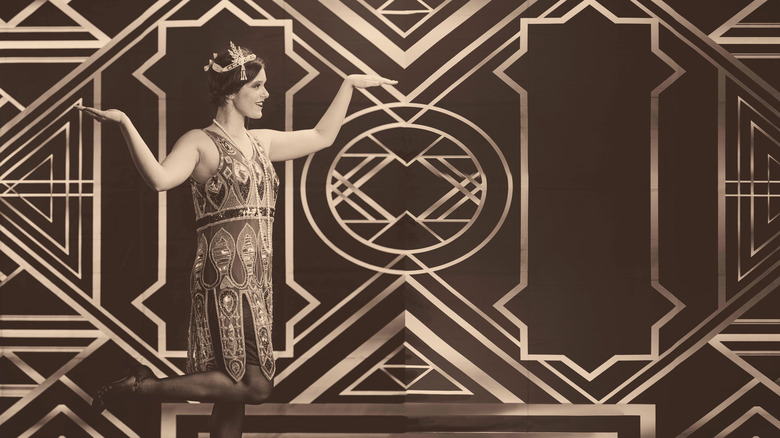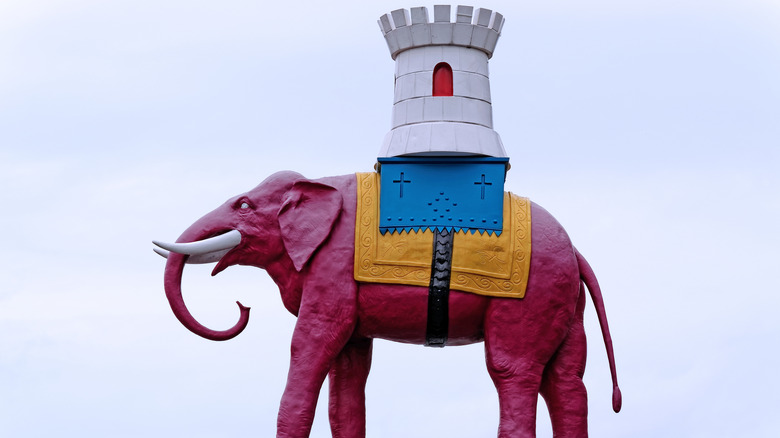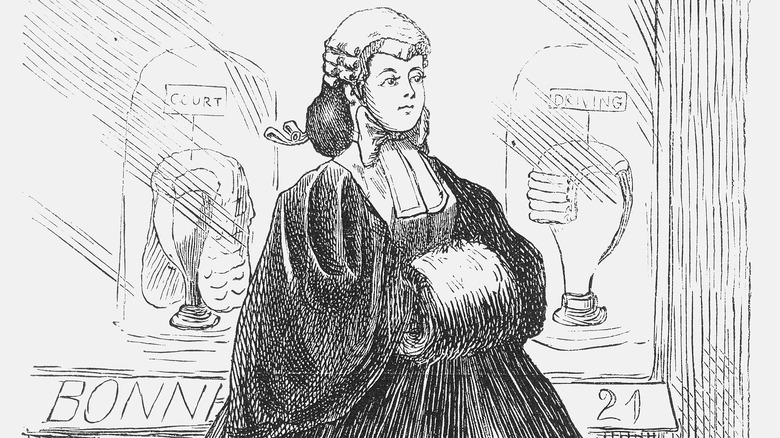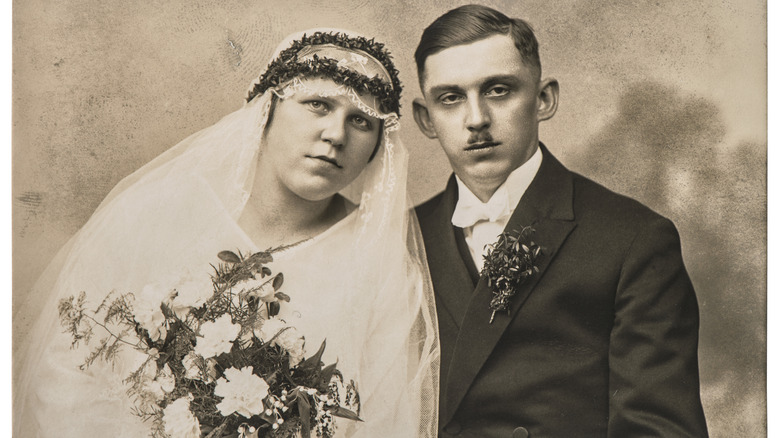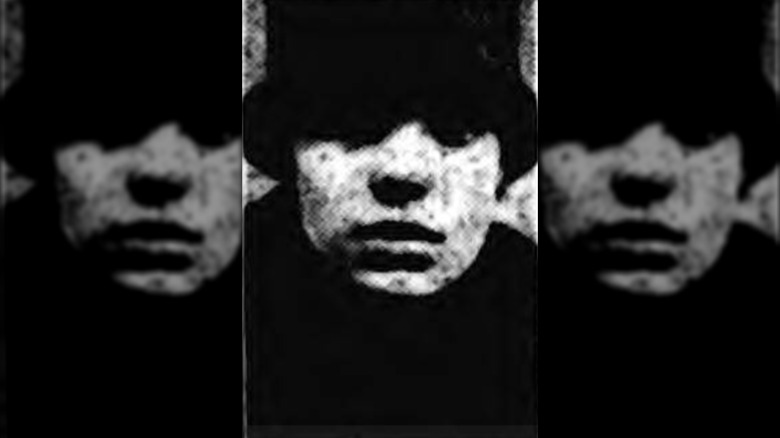The History Of The Most Feared All-Female Gang In London
Think of a 1920s gang, and you probably think bootleggers and Al Capone. London's Forty Elephants gang was a little different: it was female-only, and the members aimed to lead glamorous lives like flappers or early movie stars. They dressed in high fashion, threw huge parties, and spent lots of the money they stole (via The Guardian). They wanted to escape the kind of dreary jobs lower-class women like them were usually resigned to, according to The Culture Trip.
The gang was mostly forgotten until historian Brian McDonald uncovered their history while writing a book on gangs in general. Later, he wrote one just about them, "Alice Diamond and the Forty Elephants" (via The Culture Trip). Although their heyday was the early 20th century, the first reference to the gang in newspapers was in 1873. McDonald's research suggests the gang had already existed in some form for 100 years at that point, and their activities continued until the 1950s (via The Guardian and Wondrium Daily).
According to a scholarly article published by St. Mary's University, a young woman named Mary Carr, the daughter of an international thief became the first "queen" of the gang around the turn of the century. STMU credits Carr as being something of a trailblazer in women's ability to be "hoisters" or brokers of stolen goods — something that appealed to women from little means as a way to be independent and enjoy luxuries that were otherwise unavailable to them.
The meaning of the name
There are a few possible explanations for the gang's cryptic name, and the truth may be some combination of them. The "forty" was the approximate number of members, according to The Culture Trip. "Elephant" may have been a play on "elegant," or it may have referred to the way the women looked when exiting a shop they had robbed, with their clothes stuffed full of stolen goods (via The Culture Trip and Wondrium Daily).
The most obvious explanation, though, is that the gang's home turf was Lambeth, South London, near the famous Elephant and Castle statue. The nearby Elephant and Castle Pub served as a sort of unofficial headquarters for the gang, according to Wondrium Daily. They were also sometimes called "the Forty Thieves," the meaning of which is a bit more obvious since robbery was the crime they committed most often. It was possibly also a reference to the Ali Baba story from "Arabian Nights."
The gang's activities
The gang's most common activity, specifically, was shoplifting, particularly in London's West End shops. They had specially-tailored clothes, everything from bustles to coats, with secret compartments. They also hid items in their hats and muffs, which they wore even in warm weather (via The Guardian and Wondrium Daily). According to Wondrium Daily, they got away with a lot because they dressed well and looked upper-class. The prudish attitudes of the time period also helped, because shop assistants would give them plenty of space while they looked at merchandise, according to The Guardian.
Another tactic they used for thievery: the gang members would forge reference letters to get jobs as housemaids, then call the rest of the gang to come rob the house (via Wondrium Daily). Stolen items, wherever they came from, were disposed of through a network of fences — or someone who buys and sells stolen goods, — street market vendors, pawnbrokers, and less-than-reputable shops, according to The Guardian. When they weren't stealing, gang members made extra money by seducing men and blackmailing them; they especially went for influential men who might be able to help them in other ways (via The Guardian and The Culture Trip).
The Forty Elephants and men
The Forty Elephants didn't work totally alone. They were associated with the all-male Elephant and Castle gang who came from the same neighborhood. Much of the money they stole ended up in the hands of these men. At one point, according to Wondrium Daily, the head of the Forty Elephants -– their "queen" Alice Diamond –- was in a relationship with one of the Elephant and Castle gang, while another member was the brother of the Forty Elephants' second-in-command, Maggie Hill.
Diamond was strict about gang members' relationships with men. Before entering a romantic relationship or getting married, they had to make sure she approved. The men they were involved with needed to be trustworthy and discreet since they might learn information about the gang. In 1925, when one of the Forty Elephants married without her approval, Diamond and Hill led an attack on the newlyweds, known as the Battle of Lambeth. Diamond and Hill both landed in prison, and the Forty Elephants got a new "queen," Lillian Rose Kendall, but she wasn't as formidable as Diamond, and the gang began to decline (via Wondrium Daily).
Who was Alice Diamond?
Alice Diamond was born in 1896 in Southwark, London, and she may have been destined for a life of crime, being the daughter of a thief. She grew up in the same workhouse as Charlie Chaplin. She was precocious, becoming "queen" of the Forty Elephants in 1915 or 1916, when she was only about 20 (via The Guardian and Wondrium Daily). According to The Guardian, as a gang member, she acquired the nickname "Diamond Annie," because she could take someone out with a punch thanks to the diamond rings she wore. It helped that she was 5'9" and sturdily built, making her a match for most men (via The Culture Trip).
Diamond reorganized the gang, creating various cells that worked in different areas, sometimes committing simultaneous robberies, according to The Guardian. She used modern technology to her advantage: early cars helped the gang expand its reach to other cities, some as far away as Coventry and Liverpool. Diamond may have turned to crime because of her parents, but it also could have been because of her mistrust of the judicial system, which she viewed as a vehicle for the rich to keep all the money for themselves. After her prison stint following the Battle of Lambeth, she embarked on a new career as the madam of a brothel (via Wondrium Daily).
Other members of the Forty Elephants
The names of some other members of the Forty Elephants are still known. Ada Wellman, for example, went to prison for robbing the Army and Navy stores in Victoria, London, in 1921 but was still a member of the gang 18 years later, when she was jailed again (via The Guardian).
Maggie Hughes was infamous for being arrested after running out of a shop with a case full of diamonds and immediately bumping into a police officer. Ada McDonald, on the other hand, was known for her smarts: she foiled the police when they raided her house looking for stolen goods, showing them ledgers that proved all the merchandise was bought legally. Similarly, in 1911, Jane Durrell and her husband were tried for being suspected fences for the gang, but were acquitted because the jury decided there wasn't enough evidence to prove that Durrell and her husband had known the goods in question were stolen (via The Guardian).
